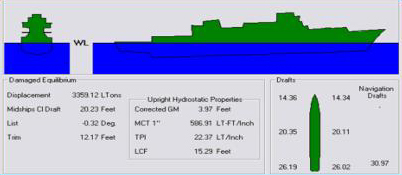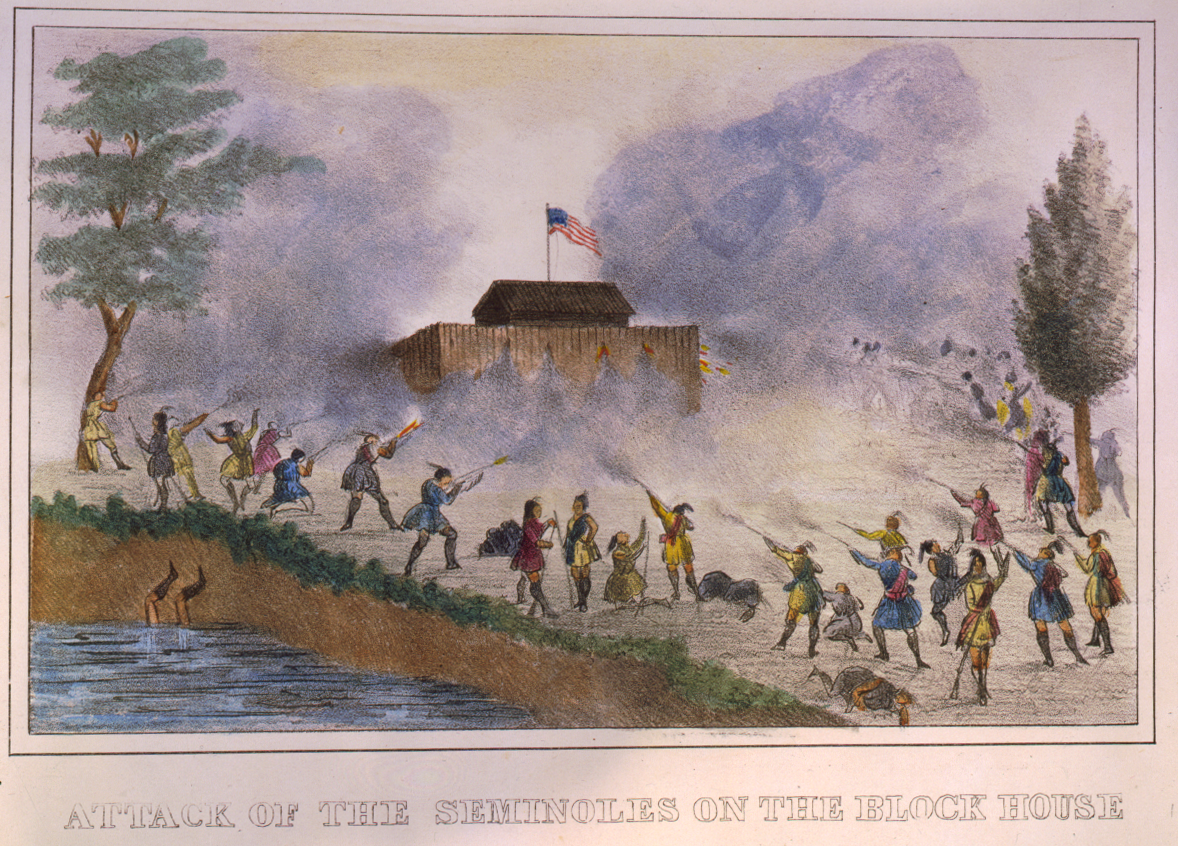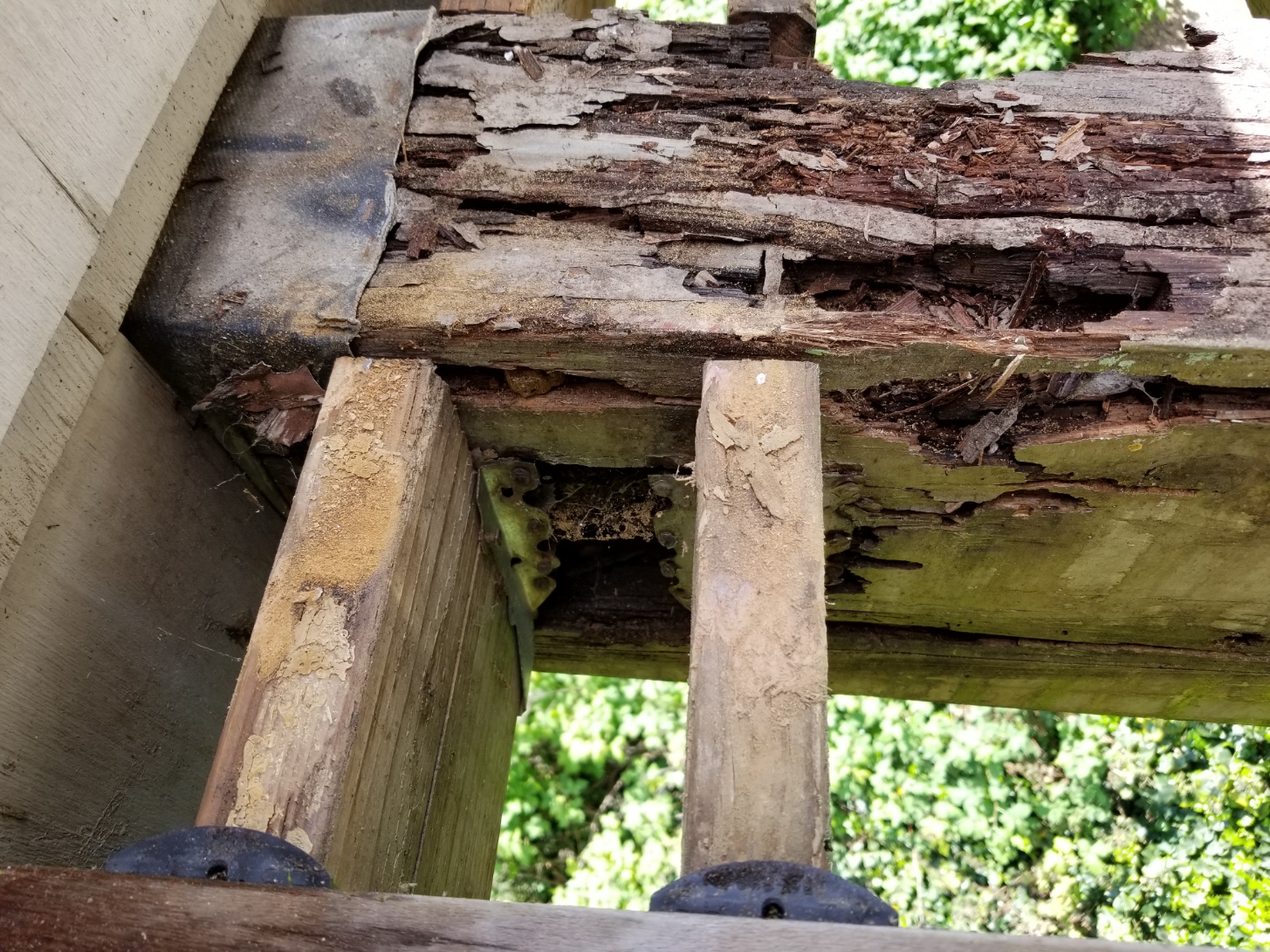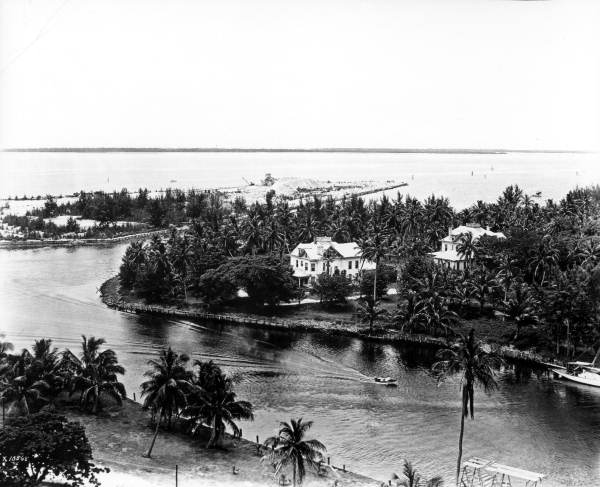|
Carysfort Reef Light
Carysfort Reef Light is located on Carysfort Reef east of Key Largo, Florida. The lighthouse has an iron-pile foundation with a platform, and a skeletal, octagonal, pyramidal tower, which is painted red. The light was above the water. It was the oldest functioning lighthouse of its type in the United States until it was decommissioned in 2015, having been completed in 1852. The light last installed was a xenon flashtube beacon. It was added to the National Register of Historic Places in 1984. The reef Carysfort Reef is named for , a 28-gun Royal Navy post ship that ran aground on the reef in 1770. The reef is one of the most dangerous on the Florida Reef tract which parallels the Florida Keys. Of the 324 ships that were known to have wrecked on the Florida Reef from 1833 through 1841 (during the period the lightship ''Florida'' was stationed at the reef), 63 did so on Carysfort Reef. The United States Lighthouse Board reported that "Carysfort Reef picks up twenty percent of al ... [...More Info...] [...Related Items...] OR: [Wikipedia] [Google] [Baidu] [Amazon] |
Carysfort Reef
Carysfort is a coral reef located within the Florida Keys National Marine Sanctuary. It lies to the east of Key Largo, within the Key Largo Existing Management Area, which is immediately to the east of John Pennekamp Coral Reef State Park. This reef is within a Sanctuary Preservation Area (SPA). The reef is northeast of The Elbow. The Carysfort Reef Light is near the center of the SPA. The reef is named after , which ran aground there (but did not sink) in 1770. Several charts and other publications of the late 18th and early 19th centuries spelled the name of the reef as "Carysford", with some sources giving the ship's name as ''Carysford'', but "Carysfort" was standard for the reef by the middle of the 19th century. The reef is one of the most dangerous on the Florida Reef tract which parallels the Florida Keys. Of the 324 ships that were known to have wrecked on the Florida Reef from the beginning of 1833 through 1841, 63 did so on Carysfort Reef. The United States Lightho ... [...More Info...] [...Related Items...] OR: [Wikipedia] [Google] [Baidu] [Amazon] |
Displacement (ship)
The displacement or displacement tonnage of a ship is its weight. As the term indicates, it is measured indirectly, using Archimedes' principle, by first calculating the volume of water displaced by the ship, then converting that value into weight. Traditionally, various measurement rules have been in use, giving various measures in long tons. Today, tonnes are more commonly used. Ship displacement varies by a vessel's degree of load, from its empty weight as designed (known as "lightweight tonnage") to its maximum load. Numerous specific terms are used to describe varying levels of load and trim, detailed below. Ship displacement should not be confused with measurements of volume or capacity typically used for commercial vessels and measured by tonnage: net tonnage and gross tonnage. Calculation The process of determining a vessel's displacement begins with measuring its draft.George, 2005. p. 5. This is accomplished by means of its "draft marks". A merchant vessel has t ... [...More Info...] [...Related Items...] OR: [Wikipedia] [Google] [Baidu] [Amazon] |
Seminole
The Seminole are a Native American people who developed in Florida in the 18th century. Today, they live in Oklahoma and Florida, and comprise three federally recognized tribes: the Seminole Nation of Oklahoma, the Seminole Tribe of Florida, and the Miccosukee Tribe of Indians of Florida, as well as independent groups. The Seminole people emerged in a process of ethnogenesis from various Native American groups who settled in Spanish Florida beginning in the early 1700s, most significantly northern Muscogee Creeks from what are now Georgia and Alabama. Old crafts and traditions were revived in both Florida and Oklahoma in the mid-20th century as the Seminole began seeking revenue from tourists traveling along the new interstate highway system. In the 1970s, Seminole tribes began to run small bingo games on their reservations to raise revenue. They won court challenges to initiate Indian gaming on their sovereign land. Many U.S. tribes have likewise adopted this practice wh ... [...More Info...] [...Related Items...] OR: [Wikipedia] [Google] [Baidu] [Amazon] |
Cape Florida Lighthouse
The Cape Florida Light is a lighthouse on Cape florida, Cape Florida at the south end of Key Biscayne in Miami-Dade County, Florida. Constructed in 1825, it guided mariners off the Florida Reef, which starts near Key Biscayne and extends southward a few miles offshore of the Florida Keys. It was operated by staff, with interruptions, until 1878, when it was replaced by the Fowey Rocks lighthouse. The lighthouse was put back into use in 1978 by the U.S. Coast Guard to mark the Florida Channel, the deepest natural channel into Biscayne Bay. They decommissioned it in 1990. Within the Bill Baggs Cape Florida State Park since 1966, the lighthouse was relit in 1996. It is owned and operated by the Florida Department of Environmental Protection. History Saltwater Railroad Before the Lighthouse was built, the Cape Florida Light was one of the places where Slavery, slaves and Black Seminoles boarded ships for the Bahamas. This was known as the ''Saltwater Railroad'', a migration that ... [...More Info...] [...Related Items...] OR: [Wikipedia] [Google] [Baidu] [Amazon] |
Indian Key, Florida
Indian Key was an unincorporated community in Monroe County and, for a while, Dade County, Florida, United States. It was located in the upper Florida Keys on the island of Indian Key and is currently a ghost town. Early history In 1733, 19 ships of the Spanish treasure fleet were wrecked on the nearby Florida Reef off of Hawk Channel by a hurricane; some of the survivors camped on Indian Key until they were rescued. Beginning in the 18th century, Bahamians and Cubans used Indian Key as a base for fishing, turtling, logging, and wrecking. Crews might stay on the island for months at a time, but there were no permanent settlers. Settlement and growth In 1821, Florida was transferred from Spain to the United States, and in 1824, two Key West men, Joshua Appleby and a man named Solomon Snyder, sent an employee, Silas Fletcher, to open a store on Indian Key. The store was to serve wreckers, settlers, and Indians in the upper Keys, and a settlement of primarily Bahamian wreck ... [...More Info...] [...Related Items...] OR: [Wikipedia] [Google] [Baidu] [Amazon] |
Second Seminole War
The Second Seminole War, also known as the Florida War, was a conflict from 1835 to 1842 in Florida between the United States and groups of people collectively known as Seminoles, consisting of Muscogee, Creek and Black Seminoles as well as other allied tribes (see below). It was part of a series of conflicts called the Seminole Wars. The Second Seminole War, often referred to as ''the'' Seminole War, is regarded as "the longest and most costly of the American Indian Wars, Indian conflicts of the United States". After the Treaty of Payne's Landing in 1832 that called for the Seminoles' removal from Florida, tensions rose until fierce hostilities occurred in Dade battle, Dade's massacre in 1835. This engagement officially started the war although there were a series of incidents leading up to the Dade battle. The Seminoles and the U.S. forces engaged in mostly small engagements for more than six years. By 1842, only a few hundred native peoples remained in Florida. Although no pea ... [...More Info...] [...Related Items...] OR: [Wikipedia] [Google] [Baidu] [Amazon] |
Dry Rot
Dry rot is wood decay caused by one of several species of fungi that digest parts of wood which give it strength and stiffness. It was previously used to describe any decay of cured wood in ships and buildings by a fungus which resulted in a darkly colored deteriorated and cracked condition. The life-cycle of dry rot can be broken down into four main stages. Dry rot begins as a microscopic spore which, in high enough concentrations, can resemble a fine orange dust. If the spores are subjected to sufficient moisture, they will germinate and begin to grow fine white strands known as hyphae. As the hyphae grow they will eventually form a large mass known as mycelium. The final stage is a fruiting body which pumps new spores out into the surrounding air. In other fields, the term has been applied to the decay of crop plants by fungi. In health and safety, the term is used to describe the deterioration of rubber, for example the cracking of rubber hoses. Discussion ''Dry rot'' ... [...More Info...] [...Related Items...] OR: [Wikipedia] [Google] [Baidu] [Amazon] |
Marine Surveyor
A marine surveyor (also referred to as a "yacht & small craft surveyor", "gasoline engine surveyor", diesel engine surveyor", "hull & machinery surveyor" and/or "cargo surveyor") is a person who inspects, surveys, or examines marine vessels in order to assess damage, inspect aberrations, or monitor their condition and that of any cargo on board. Marine surveyors also inspect equipment intended for new or existing vessels to ensure compliance with various standards or specifications. Marine surveys typically include the structure, machinery, and equipment (navigational, safety, radio, etc.) in addition to the general condition of a vessel and/or cargo. They also involve judging materials on board and their condition. Though a largely unregulated profession, marine surveyors are generally trained specifically for the role and usually selected after thorough evaluation procedures. Their duties apply to a wide range of seafaring vessels. Marine surveying is closely associated with mar ... [...More Info...] [...Related Items...] OR: [Wikipedia] [Google] [Baidu] [Amazon] |
Guerrero (ship)
''Guerrero'' was a Spanish slave ship that wrecked in 1827 on a reef near the Florida Keys with 561 Africans aboard. Forty-one of the Africans drowned in the wreck. ''Guerrero'' had been engaged in a battle with a British anti-slavery patrol ship, , stationed on the northern approaches to Cuba. ''Nimble'' also ran onto the reef, but was refloated and returned to service. The two ships were attended by wreckers, who rescued the Spanish crew and surviving Africans from their ship and helped refloat ''Nimble.'' Spanish crew members hijacked two of the wrecking vessels and took almost 400 Africans to Cuba, where they were sold as slaves. Most of the remaining Africans were eventually returned to Africa. History The history of the ship is unclear. Because the slave trade to Cuba was illegal in the 1820s, ships that successfully delivered a cargo of captives from Africa to Cuba were often destroyed or registered under a new name to avoid confiscation by the Spanish authorities. The Bri ... [...More Info...] [...Related Items...] OR: [Wikipedia] [Google] [Baidu] [Amazon] |
Miami River (Florida)
The Miami River is a river in the U.S. state of Florida that drains out of the Everglades and runs through the city of Miami, including Greater Downtown Miami, Downtown. The long river flows from the terminus of the Miami Canal at Miami International Airport to Biscayne Bay. It was originally a natural river inhabited at its mouth by the Tequesta Native Americans, but it was dredging, dredged and is now polluted throughout its route through Miami-Dade County, Florida, Miami-Dade County. The mouth of the river is home to the Port of Miami and many other businesses whose pressure to maintain it has helped to improve the river's condition. Etymology Although it is widely believed that the name is derived from a Native Americans in the United States, Native American word that means "sweet water," the earliest mention of the name comes from Hernando de Escalante Fontaneda, a captive of Native Americans in southern Florida for 17 years, when he referred to what is now Lake Okeechobee ... [...More Info...] [...Related Items...] OR: [Wikipedia] [Google] [Baidu] [Amazon] |
Lighthouse
A lighthouse is a tower, building, or other type of physical structure designed to emit light from a system of lamps and lens (optics), lenses and to serve as a beacon for navigational aid for maritime pilots at sea or on inland waterways. Lighthouses mark dangerous coastlines, hazardous shoals, reefs, rocks, and safe entries to harbors; they also assist in aerial navigation. Once widely used, the number of operational lighthouses has declined due to the expense of maintenance and the advent of much cheaper, more sophisticated, and more effective electronic navigational systems. History Ancient lighthouses Before the development of clearly defined ports, mariners were guided by fires built on hilltops. Since elevating the fire would improve visibility, placing the fire on a platform became a practice that led to the development of the lighthouse. In antiquity, the lighthouse functioned more as an entrance marker to ports than as a warning signal for reefs and promontory, prom ... [...More Info...] [...Related Items...] OR: [Wikipedia] [Google] [Baidu] [Amazon] |
Lighthouse Keeper
A lighthouse keeper or lightkeeper is a person responsible for tending and caring for a lighthouse, particularly the light and lens in the days when oil lamps and clockwork mechanisms were used. Lighthouse keepers were sometimes referred to as "wickies" because of their job trimming the wicks. Duties and functions Historically, lighthouse keepers were needed to trim the wicks, replenish fuel, wind clockworks and perform maintenance tasks such as cleaning lenses and windows. They were also responsible for the fog signal and the weather station, and played a major role in search and rescue at sea. Because most lighthouses are located in remote, isolated or inaccessible areas on islands and coastlines, it was typical for the work of lighthouse keeper to remain within a family, passing from parents to child, all of whom lived in or near the lighthouse itself. "Stag light" was an unofficial term given to some isolated lighthouses in the United States Lighthouse Service. It meant ... [...More Info...] [...Related Items...] OR: [Wikipedia] [Google] [Baidu] [Amazon] |




